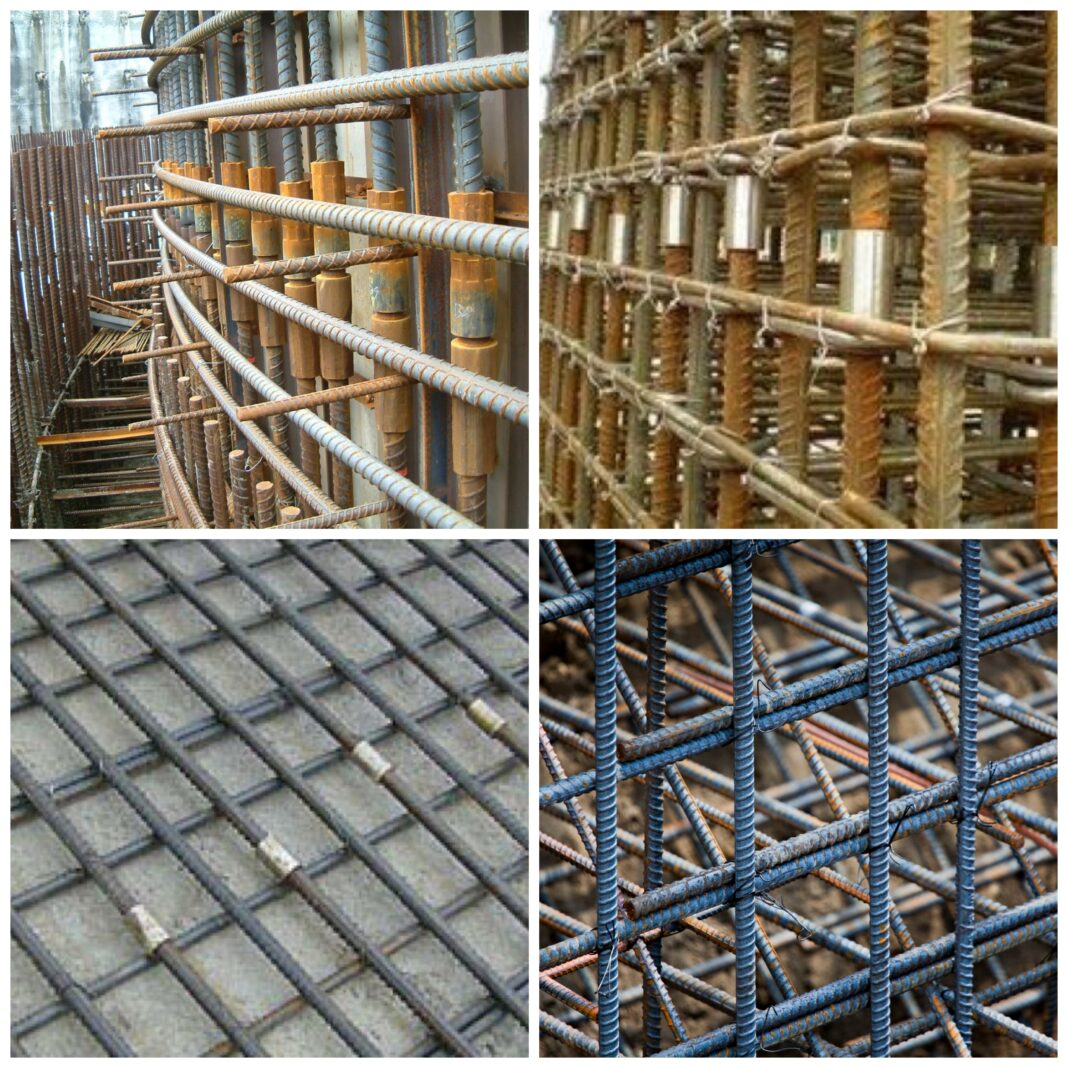
ADTO News
Different Types of Rebar Mechanical Splices
There are many types of rebar mechanical splice in the construction materials market. Basically, they can be divided into the following categories.
Based on the category of ‘tension- compression’, ‘compression only’ and ‘tension only’ there are different types of rebar mechanical splices available. Each of them is explained below.
1.Coupler for Thread-Deformed Bar
This type of deformed bars comes with special bars with thread-like rolled deformations. These are assembled with lock nuts and threaded couplers, then the nuts are tightened to the specified torque.
2.Upset Straight Thread Coupler
Upset Straight Thread Coupler is used to produce a full-length mechanical joint between reinforcing bars with upsetting ends. It can connect rebars of the same or different diameters laterally, vertically and slantingly. The coupler consists of a coupler with internal straight threads at each end that joins two upset end reinforcing bars with matching external threads.
3.Non- upset thread Coupler
Non- upset thread Coupler consists of internal straight threads at each end that join two reinforcing bars with matching external threads. It is used to reduce the net cross-sectional area of the reinforcing bar. This type of splice comes in three pieces, the two bar ends and the internally threaded coupler.
4.Cold-Swaged Threaded Coupler
Cold-Swaged Threaded Coupler is made of seamless steel sleeves that are placed at the end of reinforcing bars. These are deformed onto the reinforcing bar profile to produce mechanical interlock. This consists of pre-threaded components, which are swaged onto the reinforcing bars using a swaging press with special dyes. Splicing of the bars is completed by installing one pre-threaded component into the other.
5.Taper-Threaded Coupler
Taper-Threaded Coupler is designed for applications that require the joining of reinforcing bars. The compact design of each coupler ensures suitability for use in confined situations where space is restricted or where the loss of cover must be minimised. The couplers are normally supplied fitted to the end of the threaded bar, requiring only the engagement and tightening of the adjoining bar on site.
6.Straight Threaded Coupler with Upset Rebar Ends
Straight Threaded Coupler with Upset Rebar Ends consists of forming heads on the ends of the bars that are connected using a hydraulic machine. It is designed to fit between closely-spaced bars.
7.Grout-Filled Coupling Sleeve
Grout-Filled Coupling Sleeve is filled with grout that provides a mechanical bond between rebar deformations and grooves on the inside of the sleeve. This is filled with a cement-based, non-shrink, high-early strength grout. The range comprises two standard coupler types: Full-grout sleeves and Half-grout sleeves.
8.Combo Grout-Filled/Threaded Sleeve
Combo Grout-Filled/Threaded Sleeve is designed for the connection of precast elements. Each sleeve features a threaded end that is used for the connection to reinforcement at the precast element and a wide cavity to perform a grout connection at site. The wide mouth opening of the sleeve allows for minor bar misalignment during erection. The wide mouth also allows for transitioning between different bar sizes.
9.Metal-filled coupling Sleeve
Metal-filled coupling Sleeve is placed end to end in the metal sleeve with a molten metal filler in the tap hole. The filler material flows between the bars and the sleeve, solidifying in the deformations of the rebar and the internal ribs of the sleeve, forming a mechanical interlock.
10.Cold-Swaged Coupling Sleeve
Cold-Swaged Coupling Sleeve is used for the connection of ribbed rebar. It is made of carbon structural steel and can connect reinforcing bars with a diameter of 16 to 40 mm. The sleeve uses a hydraulic swaging press with a special dye to deform the sleeve around the ends of the spliced reinforcing bars. This produces a positive mechanical interlock with the reinforcing bars.
11.Shear Screw Coupling Sleeve
Shear Screw Coupling Sleeve consists of a coupling sleeve with shear head screws which are designed to shear off at a specified torque.
12.Extruded Coupling Sleeve
Extruded Coupling Sleeve is a cold extruding coupling sleeve that connects two reinforcing bars by extruding a coupler onto the reinforcing bars.
13.Coupling Sleeve with Double Wedge
This type of sleeve is made of a ductile iron sleeve that consists of two internal wedges. Two series of cone-pointed screws are arranged along the sleeve length.
14.Coupling Sleeve with Shear Bolt/Wedge
Coupling Sleeve with Shear Bolt/Wedge is designed to deliver a quick and simple method of splicing of 12 mm – 20 mm bar. Installation is made in seconds by overlapping the rebar in the steel sleeve and driving the wedge pin between the bars with a portable hydraulic hand tool. The coupling sleeve is oval in cross-section permitting the overlapping of two reinforcing bars of the same diameter in the sleeve.
15.Dowel Bar Mechanical Splice
This is a two-piece, upsized parallel threaded, mechanical splice that eliminates protruding dowels. No welding or machining is required for the installation of this splice and the threading operation does not reduce the nominal cross-sectional area of the bar.
16.Compression-only Mechanical Splice
This type of splice can resist compression stress merely. The compressive stress is transferred by vertical bearing from one bar to another one. Compression only mechanical splices can be used when tension stress does not occur.
Above is all kinds of rebar splice at ADTOMall. For further information, please contact us directly.


 Live Chat
Live Chat

